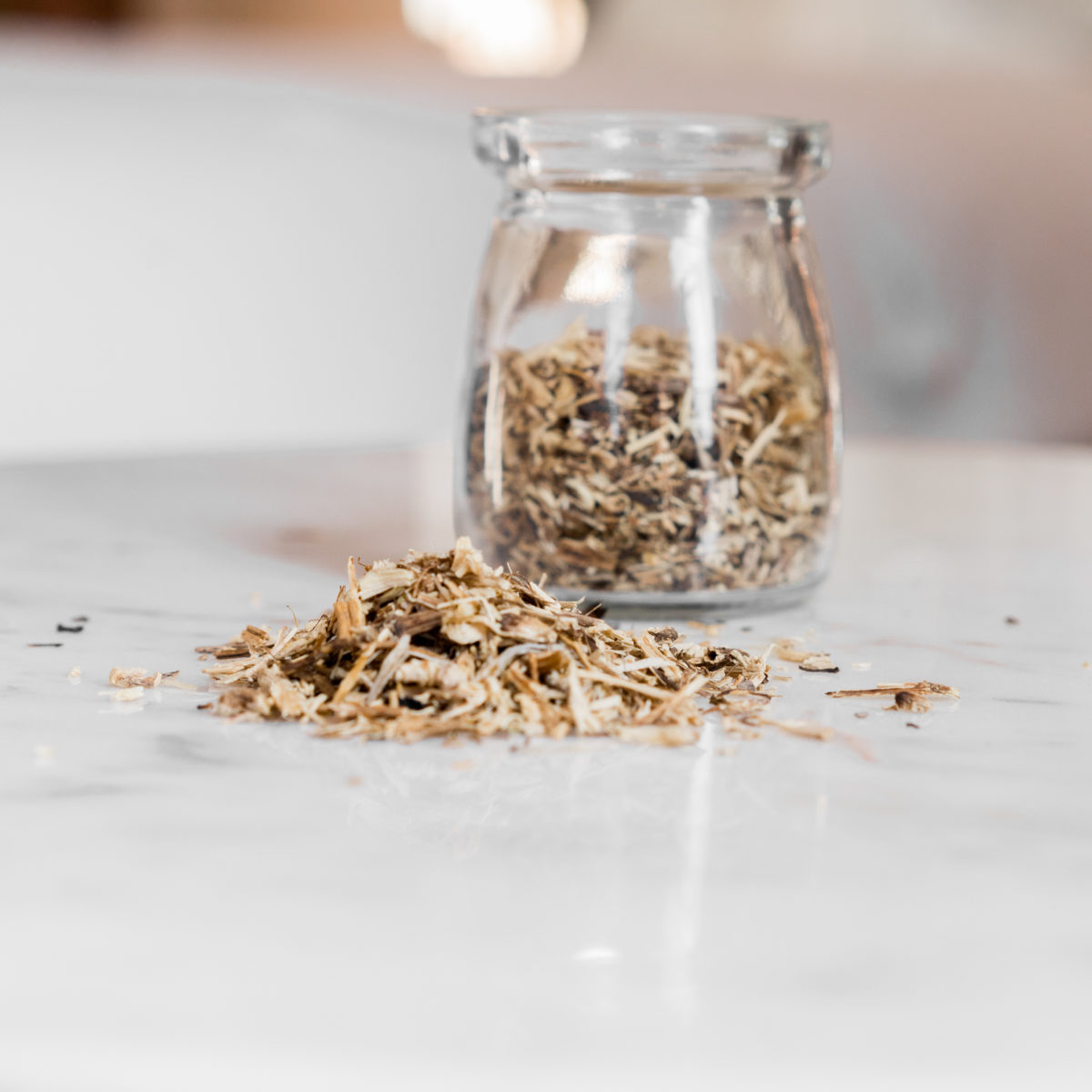
COMMON NAME (Chinese Name)
Stinging Nettle Leaf (Xun Ma)
BOTANICAL NAME
Urtica dioica
USES
Some of the earliest recorded uses for stinging nettle leaf supplementation include as a diuretic (to reduce water retention and promote increased urination) and laxative. Recent research has largely supported, if not verified, these claims. Oral supplementation of stinging nettle leaf shows some promise for use in reducing high blood pressure vis both anti-hypertensive and vaso-dilating activities.
On its own, taking stinging nettle leaf extract by mouth may be useful in controlling type-2 diabetes. Regular supplementation with stinging nettle leaf extract in combination with a regular (even gentle) exercise routine, like swimming, may dramatically improve diabetic parameters, including increasing glucose uptake or insulin. Still, other studies suggest that stinging nettle leaf extracts show significant promise for managing insulin resistance. These activities have only been demonstrated in animal studies and test-tube studies, so more human clinical trials are needed to determine the degree of this effect as well as the appropriate dosage.
Studies have proven that topical application of stinging nettle leaf extract may be an effective botanical for alternative treatment of multi-drug-resistant bacterial infections. In addition to its antimicrobial properties, stinging nettle leaf extract may be what some researchers call the “perfect” topical treatment for parasitic skin infestations with leishmaniasis. Both of these activities are augmented by stinging nettle leaf’s known wound healing properties.
While stinging nettle is often favored in Western herbalism, in Chinese herbalism it is used primarily as fodder for animals or material for cordage. None the less it can easily be incorporated into Chinese herbalism with an understanding of it is energetics. The herb is classified as salty, bitter, drying, and cool. It astringes, so would be categorized as an herb that stabilizes and binds.
PREPARATION & ADMINISTRATION
Stinging nettle leaves can be eaten fresh, as in salads, or dried and then used to prepare teas and broths via hot water decoction. The extracts derived from stinging nettle leaves can also be applied to the skin to treat a variety of mild infections. Not to be confused with white deadnettle (Lamium album), which is a similar-looking plant but often opposite-reacting supplement.
PRECAUTIONS
Stinging nettle leaf supplements are not known to be toxic. That said, it’s always advised to consult with a physician, certified herbalist, or other qualified healthcare professional before taking stinging nettle leaf or any other supplements. Common side effects of use may include diarrhea and excessive urination, as well as dehydration (and its associated symptoms). Stinging nettle leaf may also impact metabolic processes, blood sugar, and insulin levels.
REFERENCES
Ahangarpour, Akram, et al. “Antidiabetic Effect of Hydroalcholic Urticadioica Leaf Extract in Male Rats with Fructose-Induced Insulin Resistance.” Iranian Journal of Medical Sciences, Shiraz University of Medical Sciences, Sept. 2012, www.ncbi.nlm.nih.gov/pmc/articles/PMC3470082/.
Badirzadeh, Alireza, et al. “Antileishmanial Activity of Urtica Dioica Extract against Zoonotic Cutaneous Leishmaniasis.” PLOS Neglected Tropical Diseases, vol. 14, no. 1, 2020, doi:10.1371/journal.pntd.0007843.
Obanda, Diana N., et al. “An Extract of Urtica Dioica L. Mitigates Obesity Induced Insulin Resistance in Mice Skeletal Muscle via Protein Phosphatase 2A (PP2A).” Scientific Reports, vol. 6, no. 1, 2016, doi:10.1038/srep22222.
Qayyum, Rahila, et al. “Mechanisms Underlying the Antihypertensive Properties of Urtica Dioica.” Journal of Translational Medicine, vol. 14, no. 1, Jan. 2016, doi:10.1186/s12967-016-1017-3.
Ranjbari, Abbas, et al. “In Vivo and in Vitro Evaluation of the Effects of Urtica Dioica and Swimming Activity on Diabetic Factors and Pancreatic Beta Cells.” BMC Complementary and Alternative Medicine, vol. 16, no. 1, 2016, doi:10.1186/s12906-016-1064-6.
Salehzadeh, Ali, et al. “Antimicrobial Activity of Methanolic Extracts of Sambucus Ebulus and Urtica Dioica Against Clinical Isolates of Methicillin Resistant Staphylococcus Aureus.” African Journal of Traditional, Complementary and Alternative Medicines, vol. 11, no. 5, 2014, p. 38., doi:10.4314/ajtcam.v11i5.6.
Sharma, P., et al. “Antibacterial Activity and Toxicological Evaluation of Semi Purified Hexane Extract of Urtica Dioica Leaves.” Research Journal of Medicinal Plant, vol. 6, no. 2, Jan. 2012, pp. 123–135., doi:10.3923/rjmp.2012.123.135.
Zouari Bouassida, Karama, et al. “Exploring the Urtica Dioica Leaves Hemostatic and Wound-Healing Potential.” BioMed Research International, Hindawi, 2017, www.ncbi.nlm.nih.gov/pmc/articles/PMC5672119/.

Comments (0)